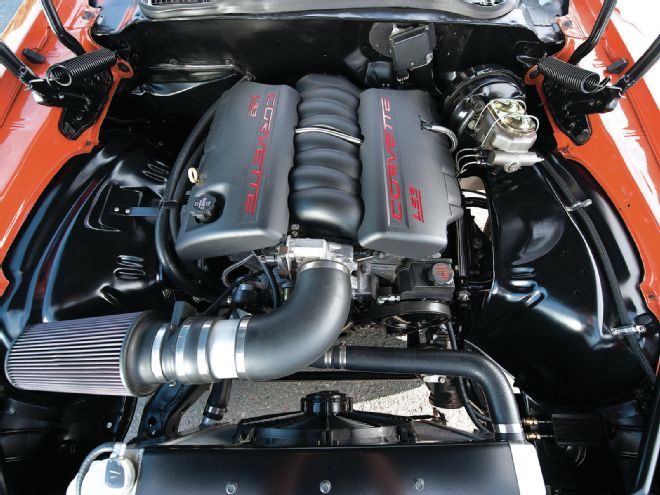
Since this magazine is in your hands, it means you're one of those forward-thinking car crafters who appreciates a powerful street engine and wants to learn more. Ever since the first LS1-powered Corvette hit the streets in 1997, the LS engines have become synonymous with late-model horsepower and torque and have become the go-to favorite of engine swappers around the world. But with this popularity brings questions concerning the natural progression of change that has accompanied this engine family's 15-year-plus production span. These changes represent much more than just expanded displacement and power. With the incredible variety of engines now out pounding the pavement, we thought it might be a good idea to chart this evolution with easy-to-use identification techniques that can be of benefit to the boneyard and swap-meet hunter. Plus, we have some just-released photos of the new LT1 Gen V engine that will debut with the 2014 C7 Corvette. Knowledge, as the old saying goes, is power, and if you know more than the next guy, you can turn that to your advantage.
A Brief LS History
A friend recently asked what the letters "LS" stand for, and we related that GM referred to the overall engine family as the Gen III and, after a revision, Gen IV engines. Since Gen III/IV contains way too many syllables, the shorthand version quickly evolved into the far simpler LS moniker that was shortened from the first Corvette engine that carried the RPO (regular production order) LS1. This was literally the next GM RPO code available for this new family of engines. From its modest 5.7L LS1 '97 Corvette beginnings, there are now dozens of different engine RPO codes that we will not even begin to list for the sake of our sanity and yours. To categorize the entire engine family, it's best to break them up into two basic divisions of iron and aluminum-block engines. The LS family was originally designed around an aluminum block that was almost immediately converted to iron for truck and SUV applications. Beyond this quick and easy delineation, recognizing the differences that separate an LS2 from an LS3, for example, become much more subtle, but the cues are there. To break down this family of engines into categories beyond iron and aluminum blocks, we'll focus on cathedral versus rectangle-port cylinder head engines, the change from mechanical to electronic throttle, and then the wave of subtle variations such as variable valvetrain technology (VVT). As for the future, the rumors from Detroit are true about the Gen V family of direct-injection engines. Let's start with the big differentiations, and then we'll break 'em down into the smaller variants. The more you know, the faster you'll go.
BORE AND STROKE CONFIGURATIONS Liters Bore / Stroke 4.8L 293ci 3.78 / 3.27 5.3L 325ci 3.78 / 3.62 5.7L 346ci 3.89 / 3.62 6.0L 364ci 4.00 / 3.62 6.2L 376ci 4.065 / 3.62 7.0L 427ci 4.125 / 4.00
The following is an abbreviated list of popular LS cylinder-head casting numbers followed by a short description. We have lumped some casting numbers together when there may be small differences, but the major components such as valve and chamber sizes are consistent.
CYLINDER HEAD CASTING NUMBERS Casting No. Description Valve Sizes Int./Ex. Chamber (cc) Cathedral Port 241 LS1 2.00 / 1.55 67 cc 243 / 799 / 823 LS1 / LS6 2.00 / 1.55 65 cc 706 / 862 / 895 LM4 / LM7 / LR4 1.89 / 1.55 61 cc 853 / 806 / 933 LS1 (perimeter) 2.00 / 1.55 67 cc Rectangle Port 317 / 035 LQ4 / LQ9 2.00 / 1.55 71 cc 373 / 873 LQ4 2.00 / 1.55 71 cc 364 / 716 / 823 L92 / LS3 2.165 / 1.59 68 cc 452 LS7 2.20 / 1.61 70 cc
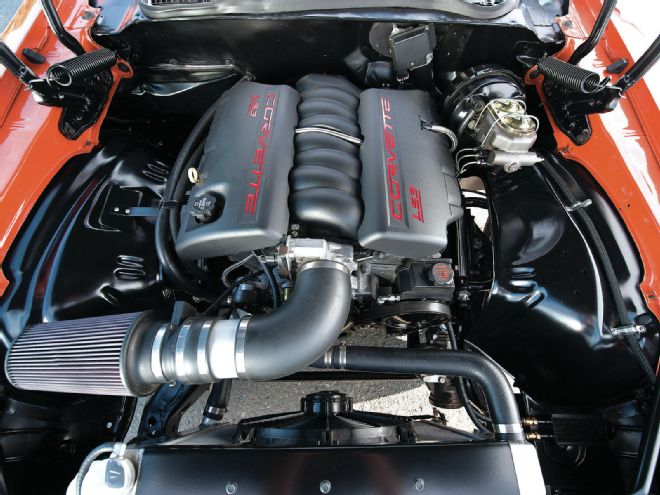
1. This LS2 engine swap into Jim Brink’s orange second-gen Camaro is a classic representation of the thousands of engine swaps into older cars that drive the demand for new and used LS engines. To determine the specific LS engine you want, you need to know the crucial differences among the various configurations.
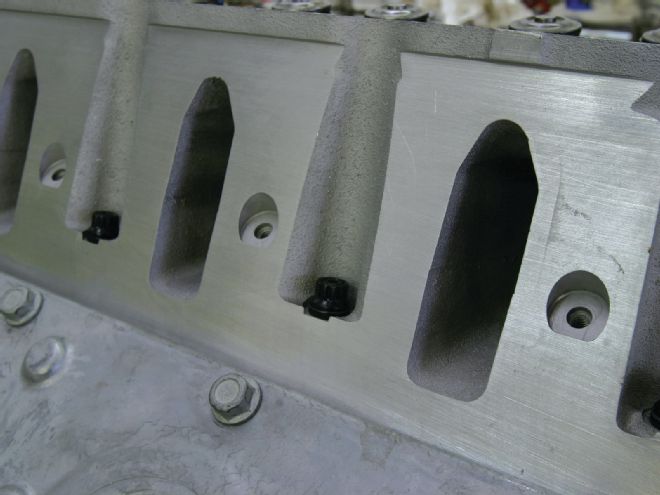
2. The attractive thing about used 4.8/5.3L iron-block truck engines is their dirt-cheap availability. The 4.8/5.3L motors are easy to identify by their large 4.8/5.3 casting mark on the front of the block, but there is no simple, external way to differentiate the 4.8 from the 5.3. The best way is to yank a head and measure the stroke. We know because we’ve been burned.
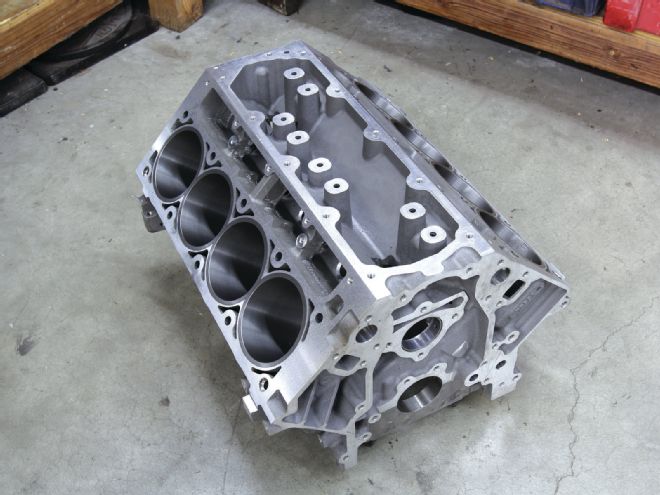
3. All LS passenger-car blocks are aluminum and most truck powerplants use an iron block, although there are several exceptions with aluminum truck blocks. Iron blocks allow larger overbores but add roughly 100 pounds to overall weight.
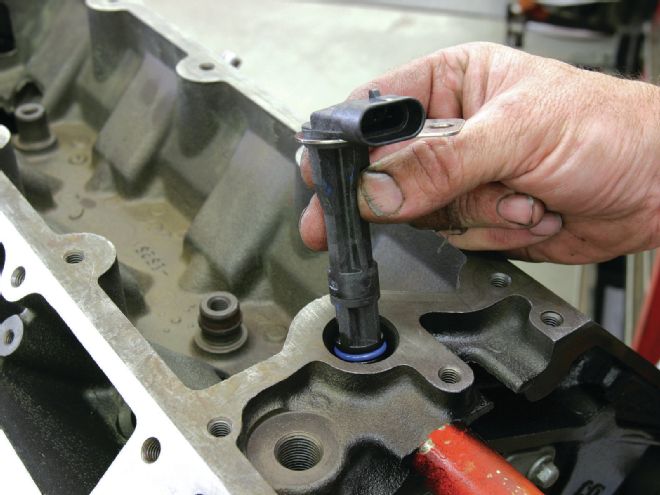
4. A quick way to tell the Gen III from the Gen IV is to look for the cam-sensor position. Gen III engines place the cam sensor at the rear of the block...
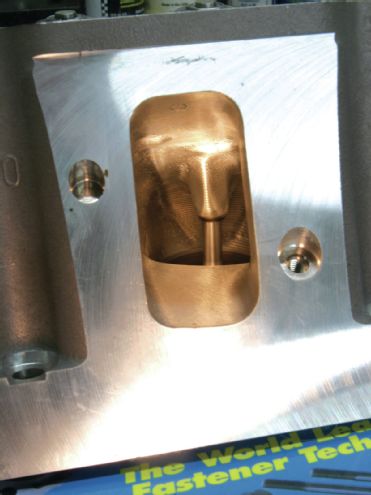
5. ...while the Gen IV repositioned the sensor up on the front timing cover.
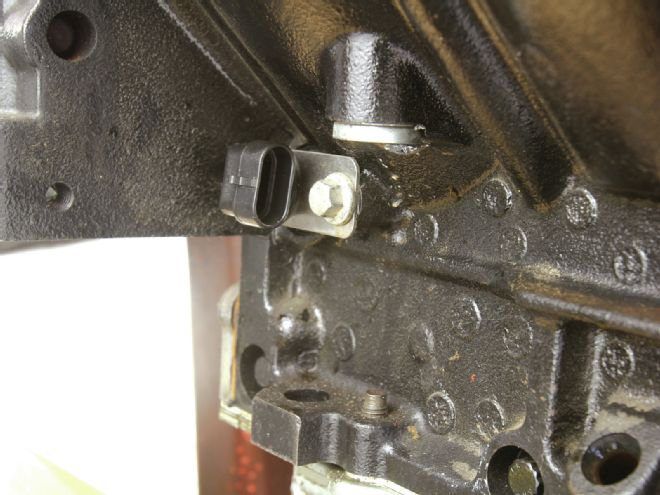
6. Though the crankshaft-sensor position has not changed, the sensor is different between Gen III and IV. The Gen III engines use a black sensor.
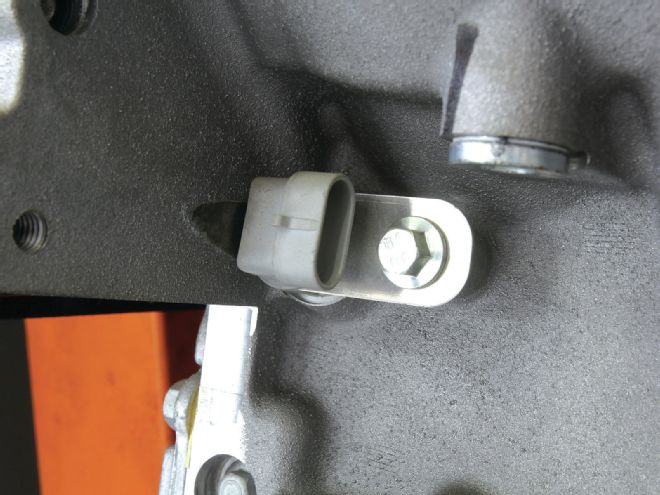
7. The later Gen IV engines employ a gray sensor. They are different because Gen III engines use a 24x tooth trigger wheel and Gen IV uses a finer 58x tooth wheel.
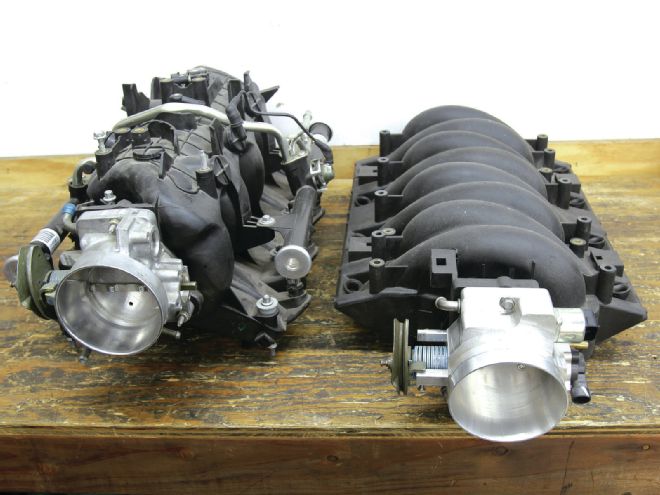
8. Truck and SUV engines generally employ the taller manifolds (left), while passenger-car engines use a shorter-height manifold (right). Don’t immediately dismiss the truck manifolds, as they make excellent torque with the longer runner length and still make decent horsepower.
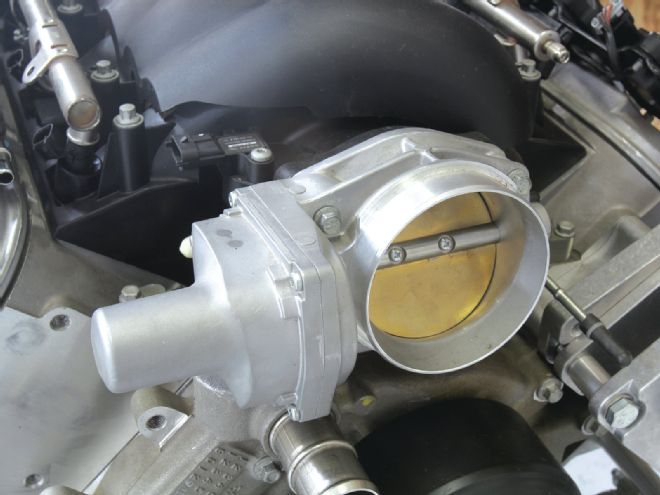
9. An easy way to spot a Gen IV engine such as an LS3 or L99 is to look for the electronic throttle compared with the earlier engines that were equipped with cable throttle actuation.
GM CRATE ENGINE LIST Description PN Source Price LS327, 5.3L, 327 hp 19244096 Summit Racing $4,891.95 LS3, 6.2L, 430 hp 19258770 Summit Racing 6,995.95 LS3 EROD, 430 hp 19257230 Summit Racing 7,839.95 LS376, 6.2L, 525 hp 19259233 Summit Racing 7,899.95 LS7, 7.0L, 505 hp 19244098 Summit Racing 14,099.95 LS9, 6.2L, 638 hp 19244099 Summit Racing 22,516.95 LS3 / 4L65E combo CPSLS34L65E Jeg’s 10,719.99

10. One of the best-known differences among LS engines is with cylinder heads. Most passenger-car and many truck engines came with what are called cathedral intake ports, so called for their peaked-roof configuration.

11. Within a few years, the Corvette and later Camaro LS3 engines began using rectangle-port heads equipped with monster 2.165-inch intake valves. These larger heads can only be used on 4.00-inch-or-larger bore diameters.
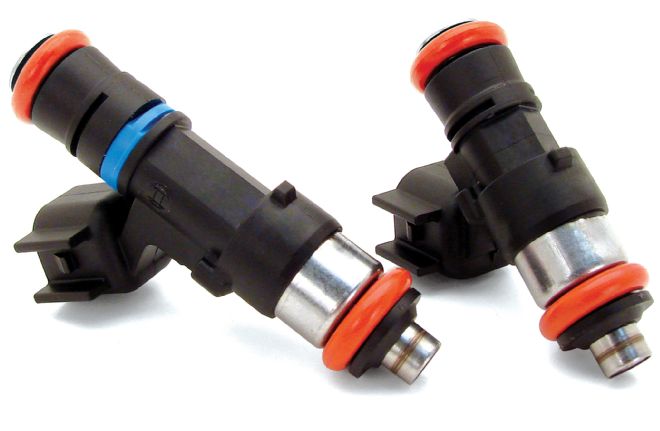
12. GM has also changed fuel injectors over the past 15 years. The original tall-injector design with a Minitimer connector (not shown) was used on the LS1/LS6 and truck engines. With the LS2, the height remained but the connector changed to a USCAR style (left). LS7/L76/L92 injectors became shorter but used the same USCAR connector (right). With each of these styles come multiple fuel-flow rates ranging from 24 to nearly 70 lb/hr.
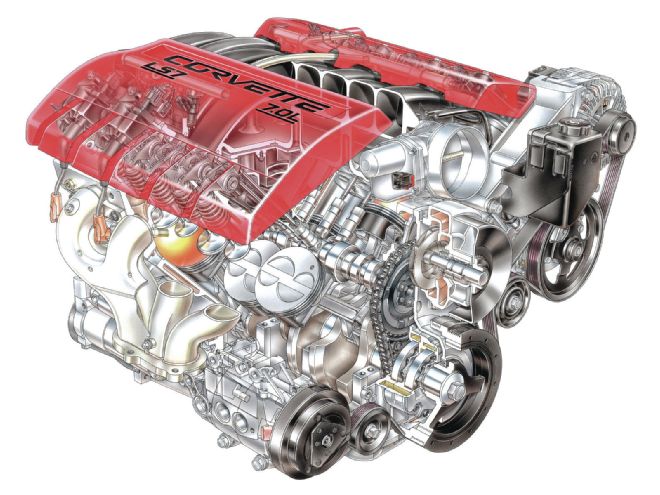
13. The 427ci (7.0L) LS7 is distinctive for several reasons. Its cylinder heads feature a unique intake bolt pattern, and while the intake rocker arms are offset like an LS3 or L92, the rocker ratio increased from the stock 1.7:1 to 1.8:1. The LS7 also uses a different aluminum block with larger bores and longer cylinder sleeves to accommodate its longer stroke.
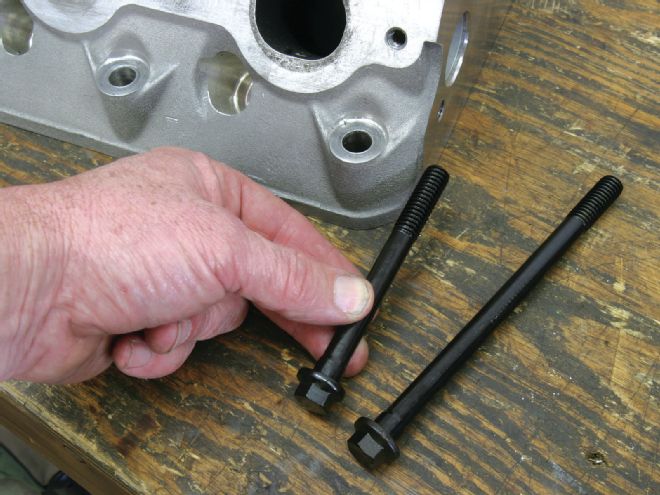
14. Roughly around 2004, GM changed from using two different-length head bolts to making them all the same length. The change occurred with later cylinder blocks placing all threads deeper in the block.
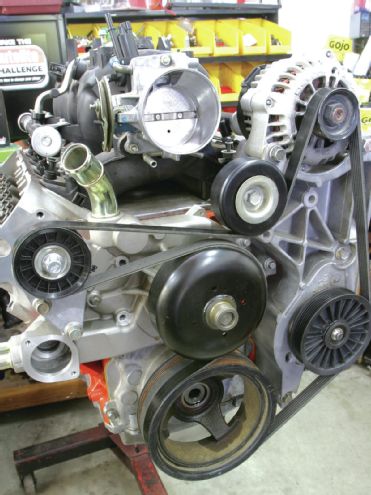
15. There is an entire story waiting to be written just on the various LS accessory drives. Among the popular LS engines, there are at least six configurations with the truck systems (shown here), Corvette systems, the new ’10 Camaro LS3 configuration, the original LS1 Camaro version, and the separate drive systems for the new CTS-V and Corvette supercharged engines.
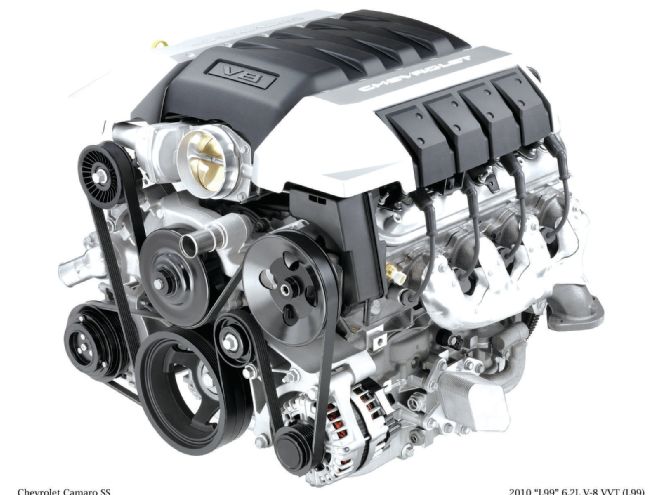
16. Another new branch on the LS engine tree is the variable valve timing (VVT) L99 engines, as used in the 2011 Camaro. The system employs high-pressure hydraulic circuits to advance and retard the cam timing to enhance both power and emissions. The L99 also incorporates active fuel management (AFM—formally known as DOD or displacement on demand). AFM drops four cylinders by deactivating the fuel injectors and the lifters so the valves don’t open. This is done to enhance highway-cruise fuel mileage.
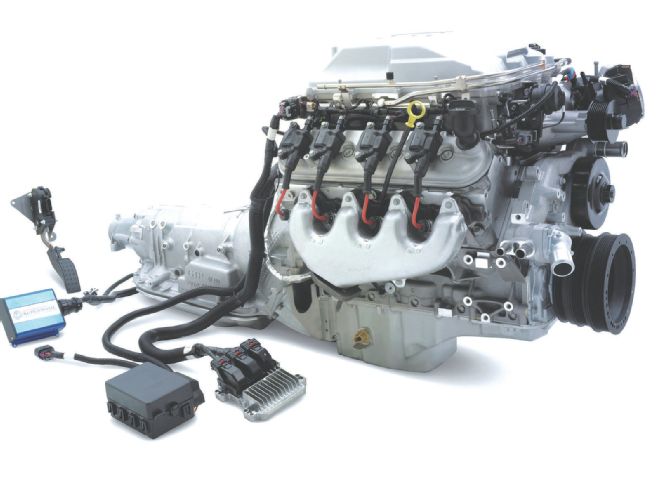
17. If a new GM crate engine better fits your plans, Chevrolet Performance has a slew of options, including the 5.3 and 6.0L EROD engines as well as a new system called Connect and Cruise. This packages an LS3 with a new GM 4L65E transmission, converter and flywheel kit, engine and trans controllers, and an electronic throttle pedal. All you do is plug everything in, and it’s ready to go. The LS3 system is PN CPSLS34L65E. The price is steep, but literally all you do is connect and cruise.
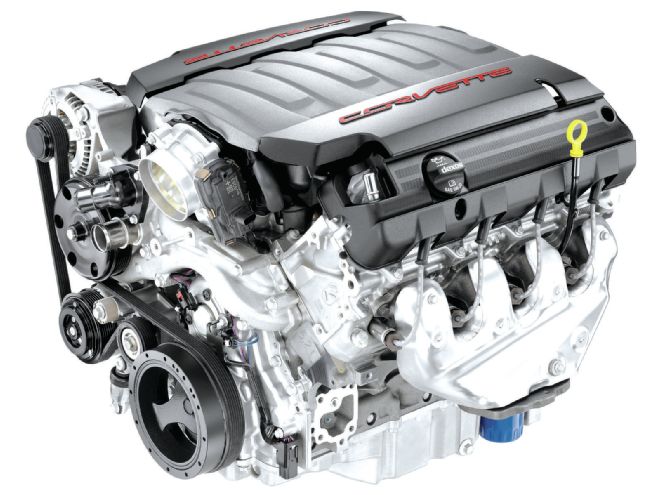
18. Just as this story was going to press, GM released preliminary photos of the new LT1 Gen V small-block that will be used in the 2014 Corvette. The 450hp engine is a 6.2L, with direct injection being the biggest change. The basic LS architecture remains the same but with taller intake ports and high-pressure injection nozzles directed into the combustion chamber. Other details include VVT and 11.5:1 compression.